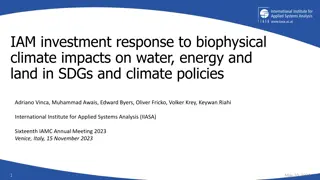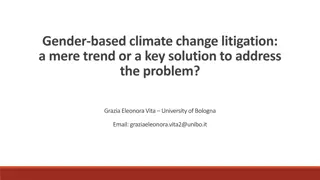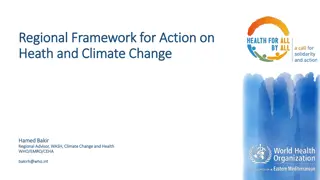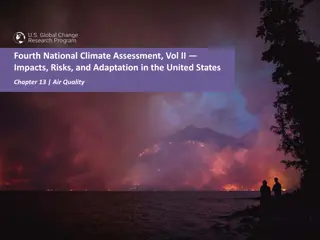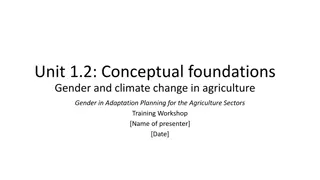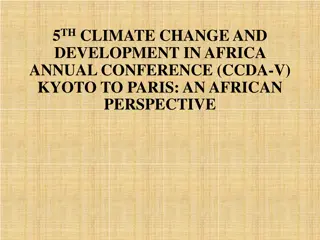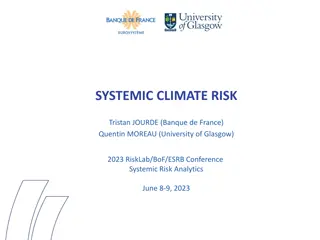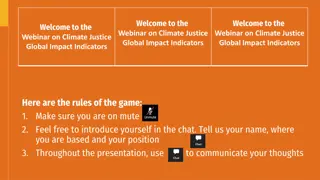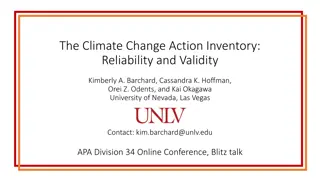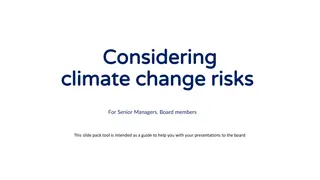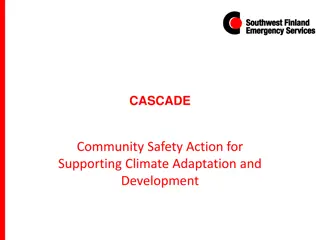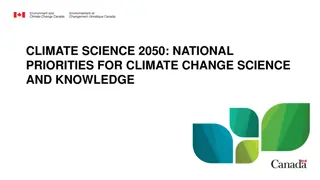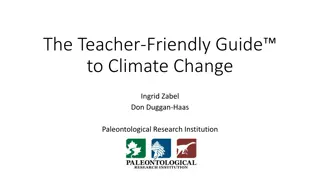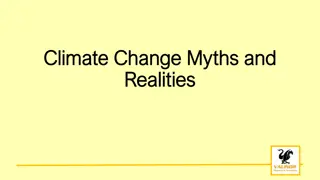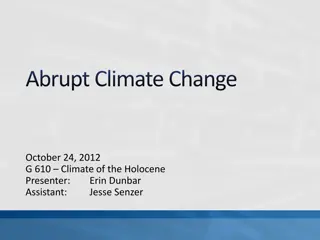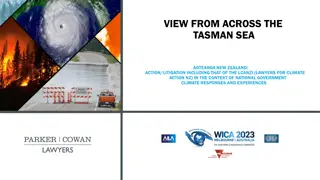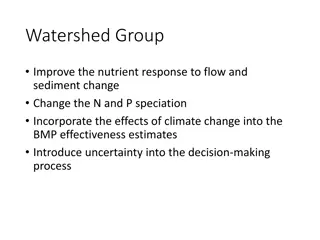Climate Change: Causes, Effects, and Responses
Explore the causes, effects, and responses to climate change in this comprehensive study. From the changes in climate over the Quaternary period to the role of greenhouse gases, farming, and weather patterns, delve into key questions and keywords related to this urgent global issue.
Uploaded on Oct 01, 2024 | 0 Views
Download Presentation

Please find below an Image/Link to download the presentation.
The content on the website is provided AS IS for your information and personal use only. It may not be sold, licensed, or shared on other websites without obtaining consent from the author.If you encounter any issues during the download, it is possible that the publisher has removed the file from their server.
You are allowed to download the files provided on this website for personal or commercial use, subject to the condition that they are used lawfully. All files are the property of their respective owners.
The content on the website is provided AS IS for your information and personal use only. It may not be sold, licensed, or shared on other websites without obtaining consent from the author.
E N D
Presentation Transcript
Tuesday, 01 October 2024 NEW TOPIC CLIMATE CHANGE CAUSES, EFFECTS AND RESPONSES
What will we be investigating? 1.How has our climate changed? 2.What are the causes of global warming? 3.What are the consequences of climate change for people and environments? 4.How and why do attitudes to climate change vary? 5.What role can you and the government in the UK play in reducing the risk of climate change?
Tuesday, 01 October 2024 How has climate changed during the Quaternary period? 1. Name one greenhouse gas 2. Which graph would be best to show how the climate has changed over 10 000 years a)bar chart b)Pie chart c)line graph 3. What is another name for farming beginning with A? 4. What does famine mean? 5. What type of weather do you get with low pressure?
Tuesday, 01 October 2024 How has climate changed during the Quaternary period? answers 1. Name one greenhouse gas (carbon dioxide, water vapour, methane, nitrous oxide) 2. Which graph would be best to show how the climate has changed over 10 000 years a)bar chart b)Pie chart c) line graph 3. What is another name for farming beginning with A? agriculture 4. What does famine mean? Extreme scarcity of food over a wide area 5. What type of weather do you get with low pressure? Wetter windier cloudier and more unsettled
keywords General Specific Cause Quaternary effect Glacial Global Inter-glacial Local Human activity National Initiatives Sustainability Greenhouse effect Greenhouse gases
How has climate changed during the Quaternary period? Key questions 1. When did the Quaternary period start? 2. What are glacial and interglacial periods? 3. How do these periods affect our climate? Key words Quaternary period Glacial Inter-glacial periods
Earth formed 4.6 billion years ago Copy the following into your books: The Quaternary Period - Earth s most recent Ice Age, starter 2.6 million years ago. The invention of farming began here Our species (Homo sapiens) was evolving during this period warm glacial interglacial (start of Quaternary Period 2.6 million years ago) 11,700 years ago The present
Ice covers about 10% of the Earth's surface today. Most ice is found in Antarctica and Greenland. About 20,000 years ago, ice joined the UK to the rest of Northern Europe. As ice spreads out this is called a glacial periods. As ice retreats (smaller during warm times) this is called interglacials. An ice sheet is a thick layer of ice that can cover a whole country including mountains and valleys. FUN FACT! 20,000 years ago the English Channel was dry land.
Task Using your knowledge from today s lesson complete the worksheet. Remember to describe in detail. This is GCSE so don t be satisfied with short answers. A copy of the textbook and extra resources can be found on Mr Anderson s blog click here Top tip: Distribution means spread of something
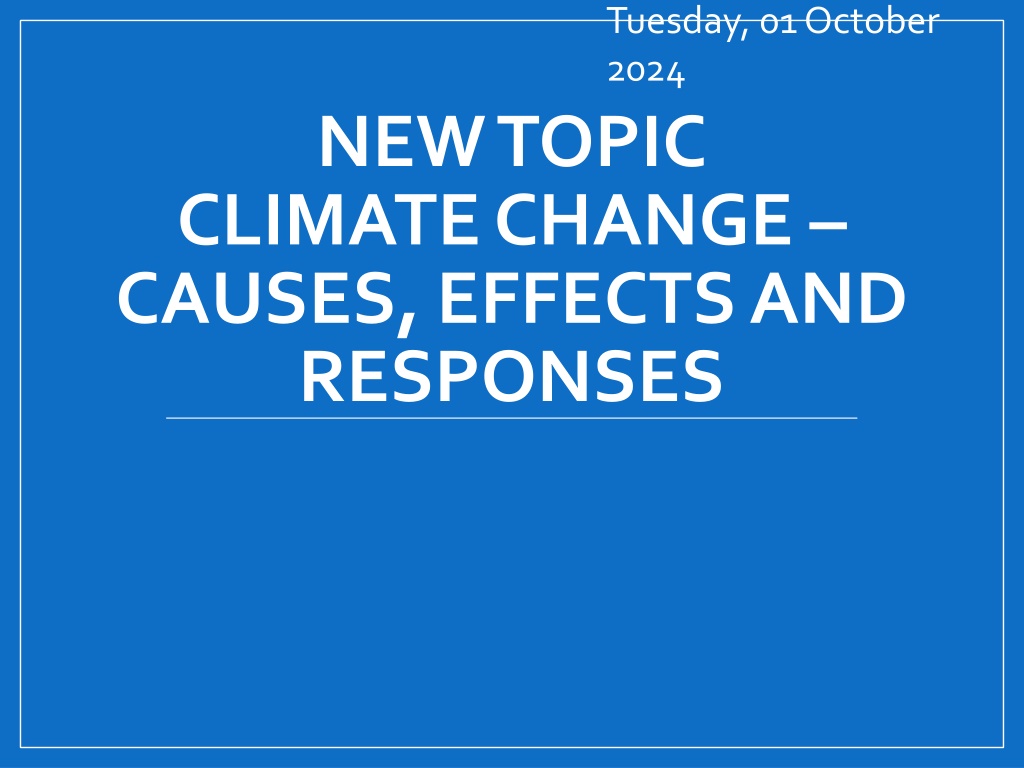
 undefined
undefined








